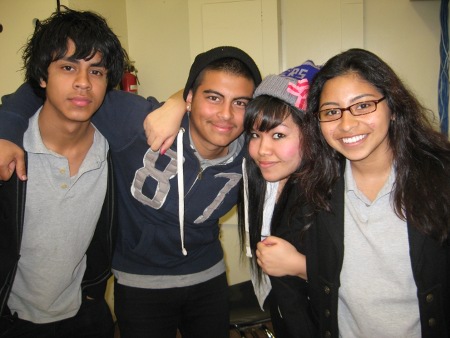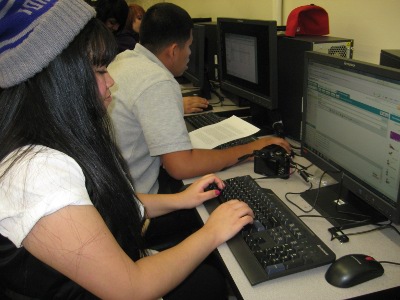This article also appeared in the Toiler Times, the student newspaper of Manual Arts High School.
By Juanita Yat
Music inspires all types of people and age groups from the youngest to the oldest. To many people in many cultures music is an important part of their way of life. In most cases music shows people who they are. While some use the art of music as entertainment other use it for other use it for inspiration. Sometimes it helps say what’s on your mind without saying it yourself. It’s a way people and bands express their feeling about society and the government
Personally for me, music is everything. Music can help in my rough times; just by listening to the lyrics I know I’m not alone, that somebody else felt or went through what I am feeling. Many people like me find that music is what calms and relaxes them and makes them feel safe. Hear it because you are living it.
Music is important to me because it’s a way I express my feelings, also music was a bond between me and dad. One of my favorite bands that brought us together was HIM. I was around 7 or 8 when I was looking up to my dad and his HIM interest. The very first album I ever had was Greatest Love Songs vol.666 which was my Dad’s. I would have to say my favorite songs from that album would have to be The Heartless, When Love and Death Embrace, and For You.
Soon my passion for HIM grew bigger I started asking for cd’s like Razorblade Romance, Venus Doom and Dark Light. These albums included songs like; Dead Lover’s Lane, The Kiss Death, Dark Secret Love, Wings of a Butterfly and Killing Loneliness. Each of these songs have meaning to me and many have got me through problems greater than life. I think at first it wasn’t only the beat of the drums, base, and an awesome guitar solo but the lyrics that touched my heart. I just sink to my music and everything is okay.
Music is everywhere. There is no noise, only sound.









 From left: Henry Pineda, Nestor Nunez, Kerlie Medina and Gisela Bats.
From left: Henry Pineda, Nestor Nunez, Kerlie Medina and Gisela Bats. Kerlie Medina is a senior who says that low expectations from others only encourage her to break them.
Kerlie Medina is a senior who says that low expectations from others only encourage her to break them. 




